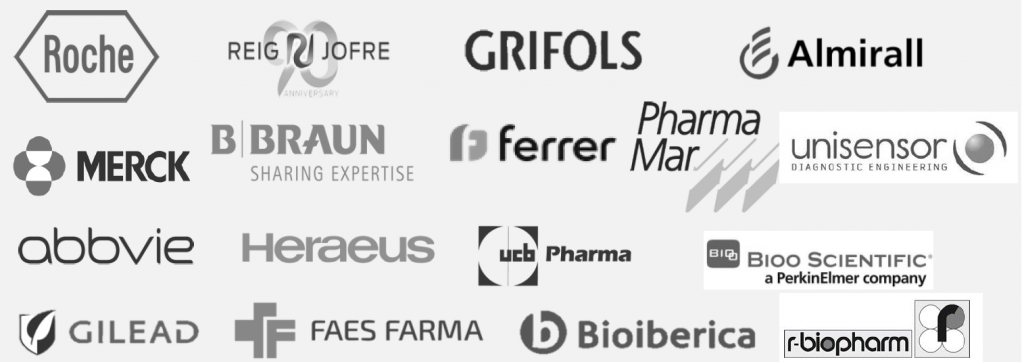‘Magic Bullets’ Against Cancer: Unveiling the Potential of DNA Nanoparticles
DNA nanoparticles to selectively target tumor tissues through precise control of the synergies between transported drugs.
February 2024, IQAC-CSIC/CIBER-BBN, Barcelona. The team led by Drs. Carme Fàbrega and Ramón Eritja, in close collaboration with 3 units of the NANBIOSIS ICTS, has developed a new strategy to improve the efficacy and reduce the toxicity of anticancer drugs. They have chemically linked several cytotoxic drugs, currently used in the treatment of various types of tumors, to DNA nanostructures. These structures selectively target cancerous tissues through folate receptors. This tactic allows precise control of drug concentration and exploits their combined effect. The results of this study represent a significant step forward towards the development of more effective and safer cancer treatments. This year 2024, they published their study in the Nanomedicine journal by Elsevier.
“The ‘Magic Bullet’ of Dr. Ehrlich” is not the title of an old pulp magazine. Rather, it is the concept that the German physician and Nobel Prize winner coined to refer to an ideal therapeutic agent capable of acting specifically against a particular disease without affecting healthy cells.
In the case of cancer therapies, we are far from reaching that magic bullet. However, science is bringing us closer to it every day.
Many current anticancer drugs are designed to intercalate into the DNA of cells and alter their function, inducing cell death. One of the most significant problems with these therapies is their adverse effects, as these drugs can also affect non-tumor cells. One way to compensate for this is by combining multiple drugs, creating synergies between them. However, this often greatly hinders both drugs from reaching the target tissue at the appropriate concentrations to exert their synergy.
A strategy to approach the concept coined by the Nobel Prize involves selectively directing drugs towards cancerous tissues and releasing them in a controlled and localized manner. This increases their concentration in the tumor area, reducing the effect on the rest of the organs and tissues.
Thanks to the ability of many drugs to intercalate into DNA, one of the most promising vehicles are DNA nanostructures. These artificially constructed nanocarriers can retain the drug and, due to their enormous versatility, can be designed to selectively target the tumor. Once there, they release the drug in a controlled manner into the cancer cells, ensuring that healthy tissues are not exposed to a toxic concentration of the drug.
However, these DNA nanocarriers face several challenges: low internalization in diseased cells, low selectivity of the target tissues, or limited control over the amount of drug loaded inside and how it binds. Additionally, they only allow the transport of DNA intercalating drugs, limiting the range of applicable therapies.
In a recent study published in the Nanomedicine journal by Elsevier, the team led by Dr. Carme Fàbrega and Dr. Ramón Eritja, in close collaboration with 3 units of the NANBIOSIS ICTS, present a new approach [1]. Through a strategy to control the binding of the drug and its concentration within their DNA nanostructures, they have succeeded in increasing efficacy and reducing toxicity.
Instead of intercalating the drugs as usual, the researchers chemically conjugated each drug to a piece of the puzzle that would later form the nanostructure. They managed this way to precisely attach three anticancer drugs to their vehicles, each of them acting on a different anticancer mechanism and promoting a synergistic effect between them. Additionally, they achieved selective targeting by binding their nanostructures to folate receptors, expressed massively in a wide variety of tumor types.
This pioneering methodology is capable of attaching multiple drugs to DNA nanostructures, each at predetermined concentrations. This represents a leap forward in advancing towards the generation of that effective and harmless magic bullet that Dr. Ehrlich envisioned.
References
[1] Natalia Navarro, Anna Aviñó, Òscar Domènech, Jordi H. Borrell, Ramon Eritja, Carme Fàbrega, Defined covalent attachment of three cancer drugs to DNA origami increases cytotoxicity at nanomolar concentration, Nanomedicine: Nanotechnology, Biology and Medicine, Volume 55, 2024, 102722, ISSN 1549-9634, DOI: 10.1016/j.nano.2023.102722.Additional information
In this project, three NANBIOSIS units have collaborated: Unit 12, with a characterization and scientific advisory role; Unit 18, providing one of the nanotoxic drugs; and Unit 29, contributing to the synthesis of oligonucleotides.
The goal of NANBIOSIS is to provide comprehensive and integrated advanced solutions for companies and research institutions in biomedical applications. All of this is done through a single-entry point, involving the design and production of biomaterials, nanomaterials, and their nanoconjugates, along with their characterization from physical-chemical, functional, toxicological, and biological perspectives (preclinical validation).
In order to access our biomedical Solutions, apply here.
NANBIOSIS has worked with pharmaceutical companies of all sizes in the areas of drug delivery, biomaterials and regenerative medicine. Here are a few of them:













